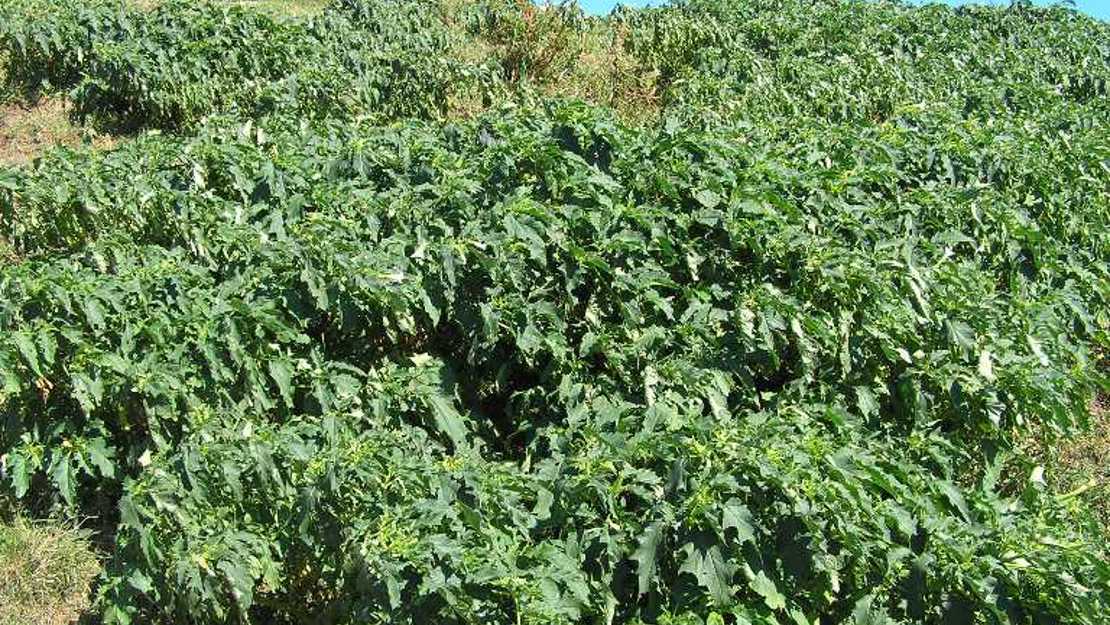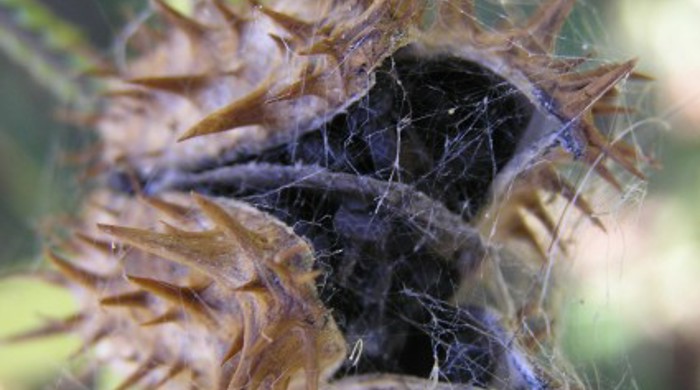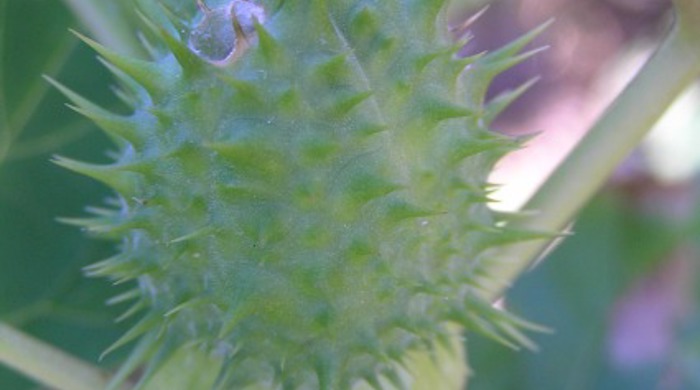Datura stramonium
Thornapple
Also known as:
Jimsonweed
Family: Solanaceae
Origin: Central and South America

Regional Pest Management Plan (RPMP) status
- Not a legally declared pest
General description
Erect, foul-smelling annual herb < 2 m tall. Stems are stout, smooth and green to reddish. Leaves are broad, toothed and alternate. Flowers are large, white, trumpet-shaped and borne in November – April. Fruits are egg-shaped, usually spiny, four-chambered and contain flat, kidney-shaped seeds.
What you need to know
Although thornapple is not a legally declared pest plant, it may still be invasive in some situations. Consider lower-risk alternatives for your garden, such as native plants.
Habitats
Disturbed sites, riparian margins, pasture, gardens, wasteland, roadsides.
Dispersal
Seeds dispersed by birds, gravity and attachment to animal coats.
Impact on environment
Reduces crop yield. Toxic to humans and animals.
Control
Site Management
Follow up treated areas each year. Encourage natural regeneration of native plants or replant treated areas where possible after 2-3 treatments to establish dense ground cover and minimise reinvasion. Other herbicides are available for selective use in pasture.
Recommended approaches
Physical control
Method: Dig out.
Plant parts requiring disposal: Seed heads if practical.
Disposal options: Remove to greenwaste or landfill if practical.
Biocontrol
Biocontrol is currently not available for this species.
Community agrichemical control recommendations
No qualifications: Cut stump and paste freshly cut base of stems with double strength glyphosate gel.
Basic Growsafe certified: Cut stump and spray freshly cut base with 250ml glyphosate green per 1L of water.
Certified Handler/Experienced agrichemical user: Foliar spray with 60ml triclopyr per 10 Litres of water and 20ml penetrant in spring or summer.
Safety notes
Plant has thorns. Plant is poisonous to humans and animals.
Caution: When using any herbicide or pesticide please read the label thoroughly to ensure that all instructions and safety requirements are followed.





